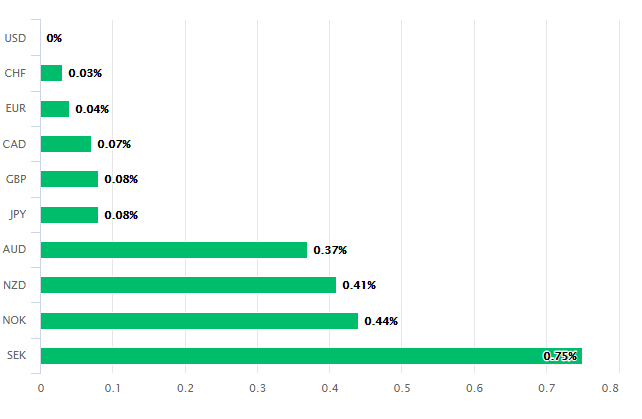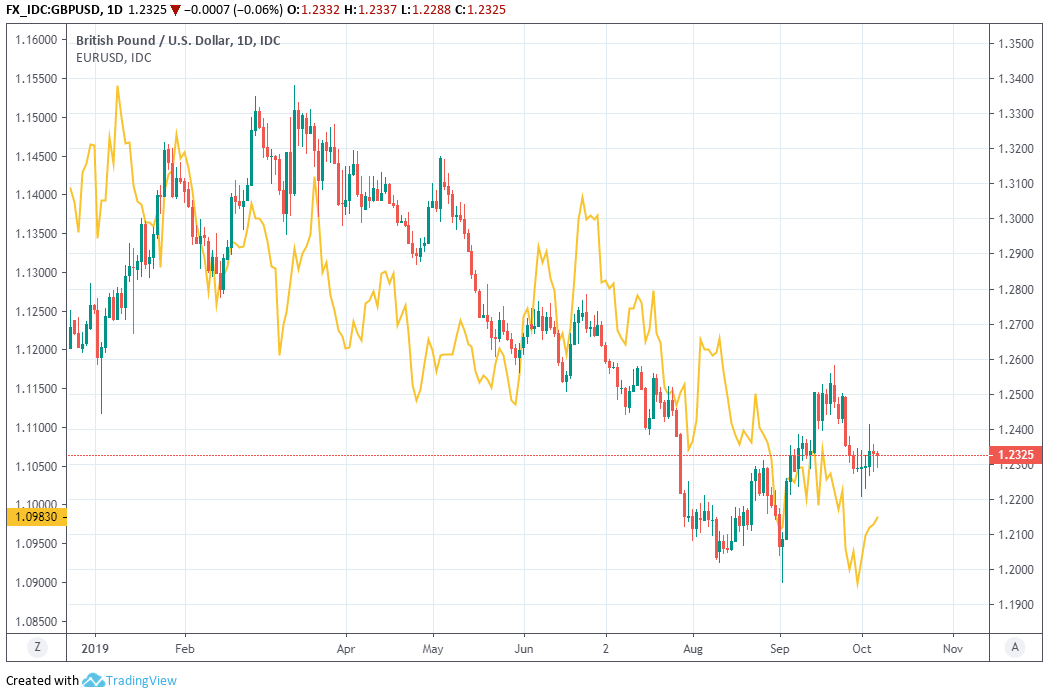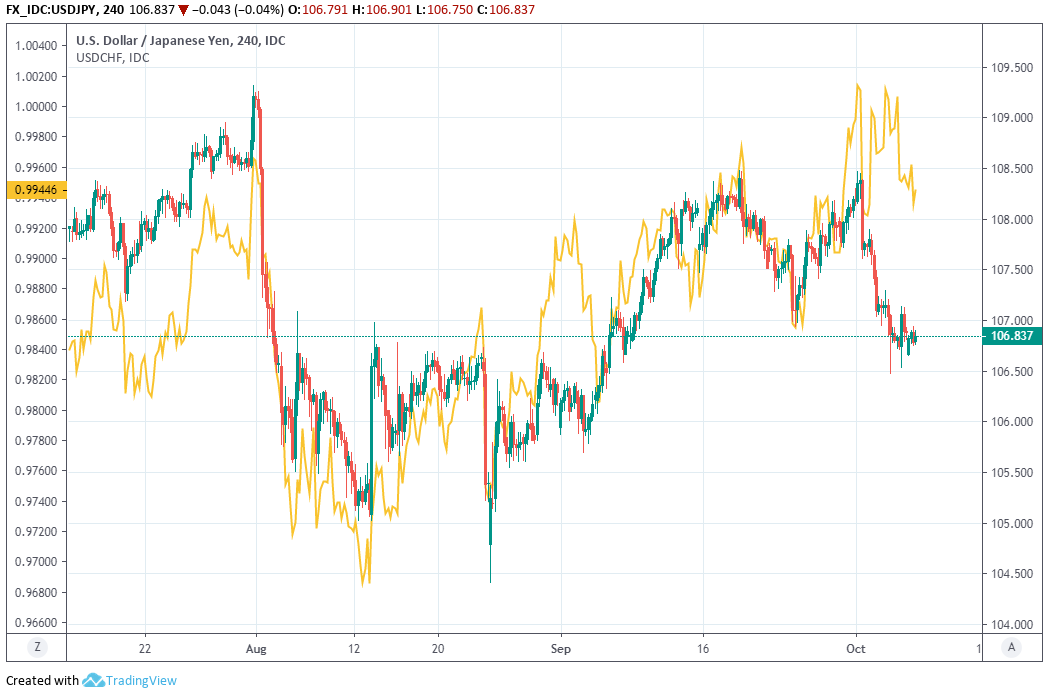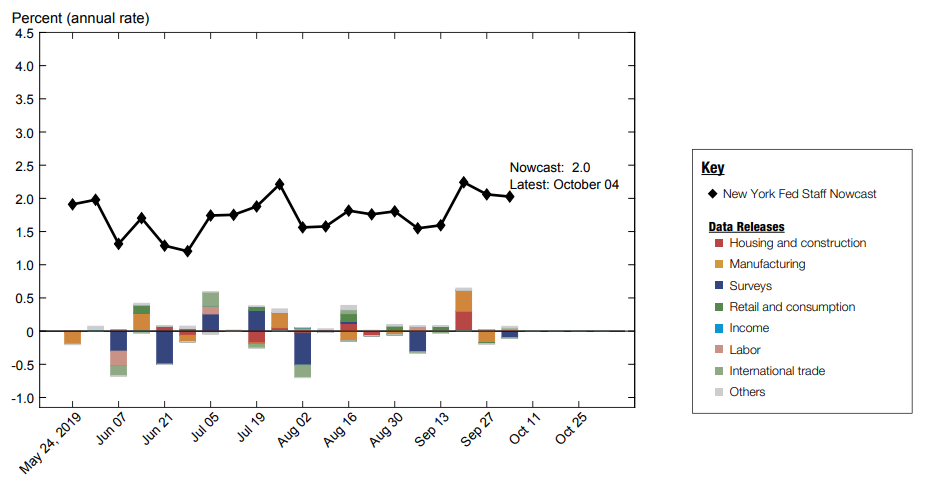The U.S. Dollar Finds Support ahead of U.S.-China Trade Talks, to Remain on Front Foot
- Written by: James Skinner

Image © Adobe Images
- USD recovers poise as unease over trade talks spreads.
- Smelling blood in water, Chinese said to be dragging heels.
- But Rabobank says Chinese risk a miscalculation on Trump.
- MUFG says job weakness, Fed cuts needed to take down USD.
- Markets.com tips GBP/USD range trading, EUR/USD losses.
The Dollar entered the new week on its front foot Monday ahead of looming trade talks in Washington, with allegations of Chinese foot-dragging prompting a bid for the safe-haven U.S. currency early in the European session, although the greenback is tipped to remain supported in the days ahead.
Pound Sterling, facing another week of adverse Brexit-related headlines, was on the defensive against the Dollar. And so too was Europe's single currency, which will be impacted both Brexit developments as well as the trade negotiations.
The greenback was higher against all major rivals Monday and is being tipped to trade in a range against Sterling this week, while advancing further on the Euro.

Above: U.S. Dollar performance Vs major rivals Monday. Source: Pound Sterling Live.
U.S. and Chinese officials will meet in Washington on Thursday and Friday to discuss differences over international trade in the shadow of an October 15 deadline that will see American tariffs on $250 bn of China's annual exports automatically lifted from 25% to 30% if an instruction to the contrary is not made by the White House. However, Bloomberg News reported Sunday that Chinese officials have "narrowed" the scope of this week's planned talks.
"There should be no surprise on the Chinese refusal to address its structural economic model: that is something I have reiterated would be the case time and again, and is the key reason why we do not expect a real deal to be done," says Michael Every, a strategist at Rabobank.
China is reportedly reluctant to discuss the subsidisation of some industries as well as non-tariff barriers such as rules that make minority shareholders of foreign companies establishing footprints in China, two key gripes of the President Donald Trump, who alleges that "unfair" trade practices give China an edge in the international market for manufactured goods.
A tariff increase on Tuesday, 15 October would risk a Chinese retaliation and threaten a further escalation of the trade war in December, while also putting an already-weak global economy under additional pressure. That would also be bad news for the U.S. given the global downturn that's resulted from the trade war is now believed to have blown back into North America, forcing interest rate cuts from the Federal Reserve (Fed) and posing a risk to the Dollar.

Above: Pound-to-Dollar rate at daily intervals alongside EUR/USD (yellow line, left axis).
"Trump ALWAYS escalates when put under pressure, and has never shown anything so far but a tendency to raise tariffs when disappointed," Every says. "If China thinks Trump is going to crumble now just because he faces possible impeachment, they are about to get a very nasty surprise."
The two sides have been warring with tariffs and other measures for almost 18 months and on December 15, substantially all of China's U.S-bound exports will have been covered by tariffs if an agreement is not reached by then. Absent an agreement, U.S. tariffs will be raised on October 15 and some new levies will then go into force on December 15, with both risking a Chinese retaliation.
Markets had become cautiously optimistic about the prospect of an October trade breakthrough because throughout September, there've been signs the U.S. economy is slowing, with much of the downturn emanating from the trade-sensitive factory sector. However, President Donald Trump is once again mired in controversy as House of Representatives Democrats attempt to impeach him over unproven allegations of impropriety in office.
"The US dollar has strengthened modestly during the Asian trading session supported by reduced optimism over the US-China trade talks this week. It follows last week’s correction lower driven by weaker than expected US economic data," says Lee Hardman, an analyst at MUFG. "More acute weakness in the US labour market followed by aggressive Fed rate cuts will be required to trigger a more sustained reversal of US dollar strength."

Above: USD/JPY rate shown at 4-hour intervals alongside USD/CHF rate (yellow line, left axis).
There's now speculation the impeachment probe, which is threatening President Trump's re-election prospects, and economic pressures will be enough to weaken the White House's resolve in the negotiations. Rabobank, as well as the White House itself, says that would be a miscalculation because President Trump has tended to up the stakes involved each time he's put under pressure.
Any escalation of the trade war over the coming weeks could lift the safe-haven Dollar in the short-term because of the damage that it might also cause to the global economy. China's economy has been hurt by the tariff fight but the Eurozone has arguably been the greatest victim of the whole affair, which has pressured the Euro and helped keep the Dollar supported because the single currency accounts for around one half of the Dollar index.
Destatis said Monday that German factory orders fell 0.6% in August while the Federal Reserve Bank of New York said Friday that its 'now-cast' is pointing toward U.S. economic growth of 2% in the third-quarter, unchanged from the prior period. However, the New York Fed also said that last week's Institute of Supply Management (ISM) surveys have reduced the now-cast for the final quarter by 0.5%, taking it down to 1.3%.
"It provided some light relief then that the non-farm employment report was not as weak as feared. It revealed that private nonfarm employment growth increased by 114k in September following an upwardly revised increase of 122k," Hardman says. "If that weakening trend continues over the next six months, it would become more concerning for the Fed and the U.S. Dollar."

Above: New York Federal Reserve 'now-cast'.
Monday's bid for the Dollar comes after the latest non-farm payrolls report revealed steady jobs growth, which led the unemployment rate to fall to a new multi-decade low in September. The report tempered fears about the current health of the economy, but it's had little bearing on the immediate outlook and financial markets are still betting the Fed might cut its interest rate for a third time at the end of the month. And October escalation of the trade conflict would simply make that even more likely.
Given the recent deterioration in U.S. economic data another escalation of the trade conflict would place an even larger question mark over, if not call time upon, the U.S. economic outperformance that enabled the Fed to raise rates four times in 2018 while the rest of the global economy stagnated and other central banks sat on their hands. That international interest rate dynamic was the main driver behind the rally that took the Dollar index to multi-year highs and many exchange rates to multi-year lows.
"German factory orders this morning show yet more weakness in Europe’s biggest economy. Factory orders were –0.6% month on month versus an expected –0.3%, and down 6.7% year-over-year. The collapse in German manufacturing has been spectacular," says Mark Wilson at Markets.com. "GBPUSD has been a little shaky but volatility is not especially high as the market waits to see what happens on Brexit. Anything within 1.22-1.24 is in the range. A break on either side of this could be chased. EURUSD is marching slowly higher but running into resistance around 1.10 - twice attempted last week and twice failed. A third go will need to succeed or we may expect a retrace to the bottom of the range 1.0880."
Time to move your money? Get 3-5% more currency than your bank would offer by using the services of foreign exchange specialists at RationalFX. A specialist broker can deliver you an exchange rate closer to the real market rate, thereby saving you substantial quantities of currency. Find out more here.
* Advertisement




